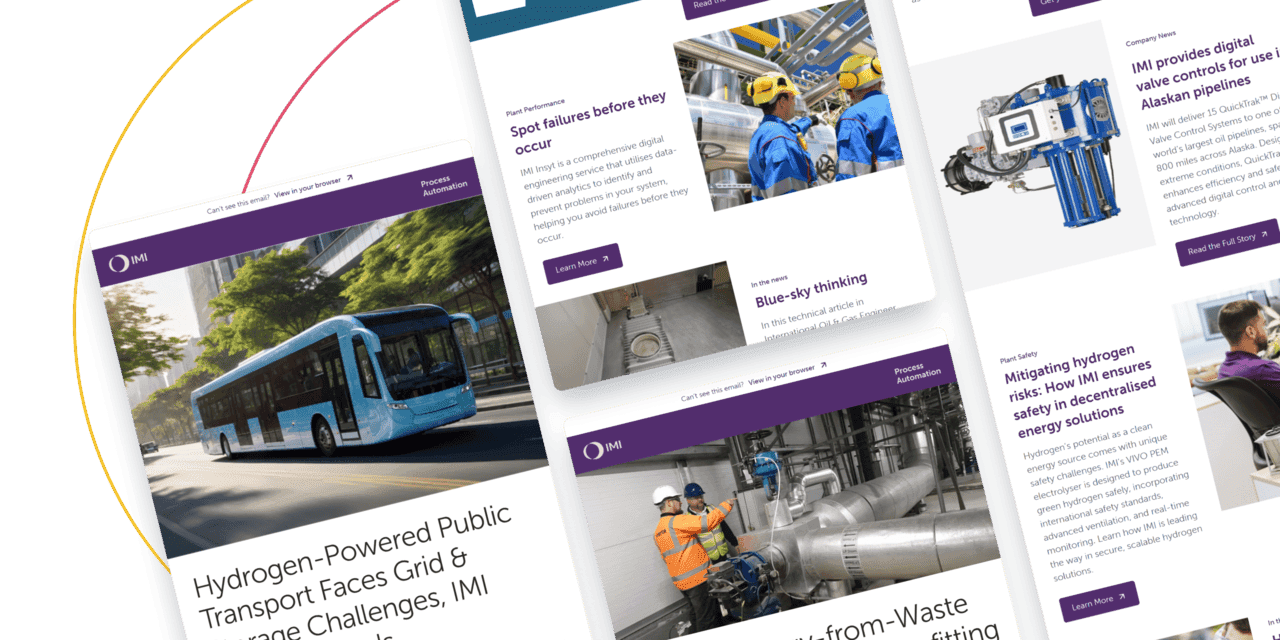Organization Sectors
Organization Sectors
Stay up to date on all the latest Process Automation news
© 2025 IMI plc, All Rights Reserved
© 2025 IMI plc, All Rights Reserved

BLOG

Written By Mary Loftus
August 14, 2024
Our customers rely on us to deliver these valves to protect the most critical component of their process, the compressor. In many cases, the compressor can be the most expensive component of a process system with extremely high capital costs. For example, a single refrigerant compressor in an LNG facility could cost tens of millions of euros.
Compressors serve the basic function of increasing substance pressure, usually a gas, by reducing its volume. They typically have long, effective lifespans. However, the surge can influence the maintenance costs, life span, and even the integrity of the compressor. A surge event occurs when the flow of gas reverses its direction due to a reversal of the energy balance over the impeller blades.
Surges are not limited to times of reduced throughput. They can and do occur during full operation and can be caused by various circumstances, including process upsets, start-up and shutdown conditions, reduced flow conditions, operator error, gas composition change, and many other reasons. Since these circumstances cannot always be avoided, it is of the utmost importance that the anti-surge valve functions correctly.
A typical specification for an anti-surge valve will have limits imposed for:
Modulating close and open < 2 secs.
Emergency (trip) opening – 0.5 to 2 sec.
Max delay/lag time – 0.3 sec.
Dynamic factory acceptance testing (FAT) to verify control valve stability.
Requirements for minimal overshoot and quick correction without oscillation.
The last two requirements are related to the need for the anti-surge valve to operate on demand, with precise movement and without sticking or slipping. One focus of IMI as an anti-surge valve manufacturer is to ensure that the predicted resolution of the control system is at a minimum. The resolution of a valve considers different factors and is directly proportional to the static friction minus the dynamic friction. It is, therefore, of key importance for our customers that the valve friction is minimal and that the valve packing set, which is the primary source of control valve friction, will not have an undue influence on the valve performance.
In the marketplace, various fugitive packing systems are available that do not meet the requirement of low friction. In many cases, the packing sets consist of several seals in a series, which are then heavily compressed and, as a side effect, have a high contact length on the valve stem and high friction. IMI has experience with this type of packing, having tested these types of designs as part of our fugitive emission R&D programme. And we can confirm that a long seal with a high preload will have higher friction.
With the development of the EEEasy-Seal™ fugitive emission packing set, IMI took a new approach. The design consists of several seals in series; however, the seals are not loaded externally via a high preload. Instead, the seals are installed in a fixed cavity, with a small gap in the assembly at the top of the seal. The packing set meets the requirement of being spring-energised since some seals are U-cup designs pressurised via an internal spring.
The U-cup and V-ring seals used in the assembly are also pressure-energised. After extensive fugitive emission qualification testing, which included tests with up to 60,000 cycles, observing the actuator valve performance during the tests and inspecting the seals for wear after the test, we concluded that the EEEasy-Seal™ did not cause excessive friction. In fact, due to the reduced contact area of the seal, it is actually a low-friction packing set.
We were sceptical about this conclusion, especially regarding the longer version of the seal that we recommended using in a critical compressor anti-surge application. At the request of a key customer, we conducted comparison testing between two versions of the EEEasy-Seal™ packing set and a standard V-ring packing set.
The friction tests were conducted in accordance with Annex A of EN60534-9:2007 on a complete valve and actuator assembly.
The test was conducted at ambient temperature with the following pressures:
Pressurised with nitrogen gas to
49barg (ASME 300).
103barg (ASME 600).
148barg (ASME 900).
A pre-load was applied to the Teflon V-rings according to the installation and maintenance instructions.
EEEasy-Seal™ packing was installed in a fix cavity without the possibility to apply a preload via torquing of the packing blots.

For all test cases, the EEEasy-Seal™ packing configurations had lower friction compared to the Teflon V-ring packing set. The charts below summarise the measured dynamic and static friction. It should be noted that the results include the friction of the whole valve and the actuator assembly (actuator bushing and valve balance seal friction included).


The test results confirmed our hypothesis that EEEasy-Seal™ packing is low-friction compared to standard Teflon v-rings. Extensive type certification testing and a significant installed base led us to conclude that EEEasy-Seal™ is a robust, user-friendly, low-maintenance, or even no-maintenance design that, due to lower friction, provides increased reliability for critical applications like anti-surge.
EEEasy-Seal™ can be a game changer in meeting carbon emission goals without compromising performance; instead, it offers a small boost in reliability.
Stay up to date on all the latest news and articles from IMI.

Stay up to date on all the latest news and articles from IMI.


Stay up to date on all the latest news and articles from IMI.
